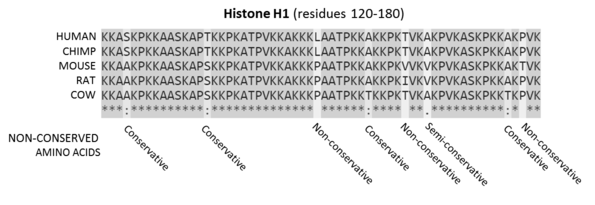
Back تراصف تسلسلي Arabic Alliniadura de secuencies AST Poravnanje sekvenci BS Alineament de seqüències Catalan Alignment (biologie) Czech Sequenzalignment German Στοίχιση ακολουθιών Greek Alineamiento de secuencias Spanish Sekuentzien lerrokatze Basque همترازسازی توالی Persian
This article needs additional citations for verification. (March 2009) |
In bioinformatics, a sequence alignment is a way of arranging the sequences of DNA, RNA, or protein to identify regions of similarity that may be a consequence of functional, structural, or evolutionary relationships between the sequences.[1] Aligned sequences of nucleotide or amino acid residues are typically represented as rows within a matrix. Gaps are inserted between the residues so that identical or similar characters are aligned in successive columns. Sequence alignments are also used for non-biological sequences such as calculating the distance cost between strings in a natural language, or to display financial data.

Sequences are the amino acids for residues 120-180 of the proteins. Residues that are conserved across all sequences are highlighted in grey. Below the protein sequences is a key denoting conserved sequence (*), conservative mutations (:), semi-conservative mutations (.), and non-conservative mutations ( ).[2]
- ^ Mount DM. (2004). Bioinformatics: Sequence and Genome Analysis (2nd ed.). Cold Spring Harbor Laboratory Press: Cold Spring Harbor, NY. ISBN 978-0-87969-608-5.
- ^ "Clustal FAQ #Symbols". Clustal. Archived from the original on 24 October 2016. Retrieved 8 December 2014.
© MMXXIII Rich X Search. We shall prevail. All rights reserved. Rich X Search